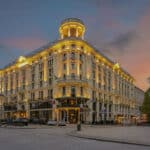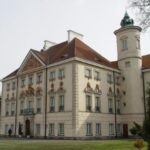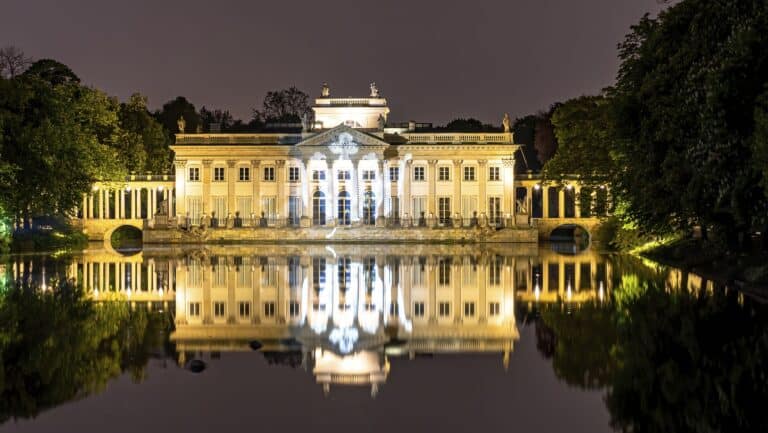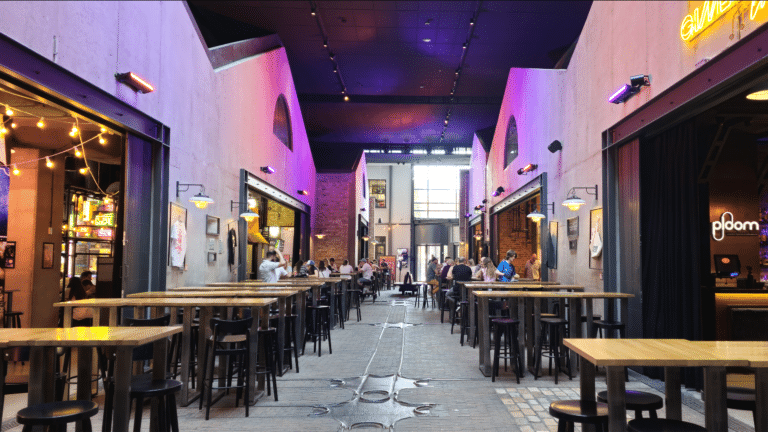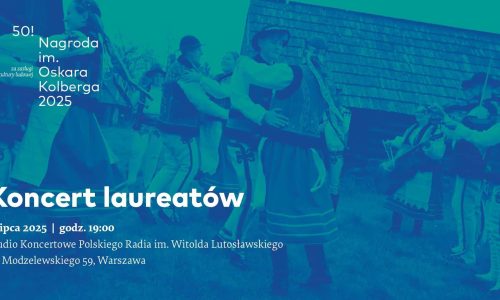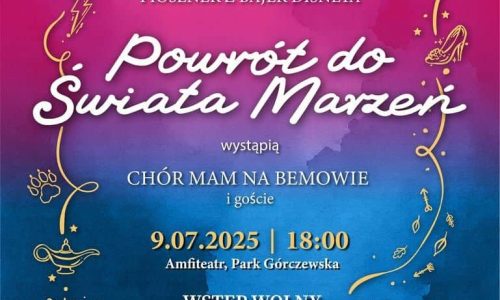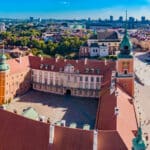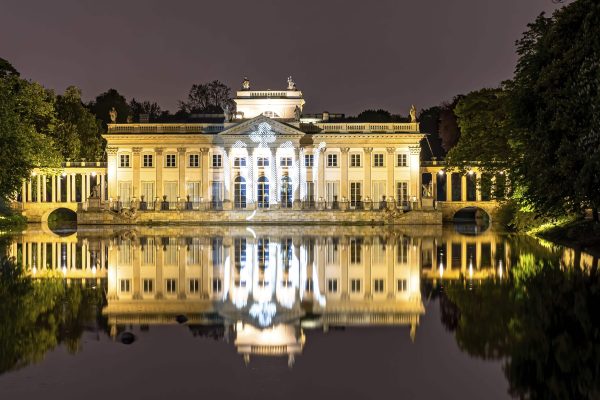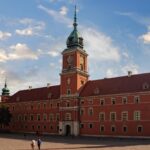On the occasion of the celebrations marking the 80th anniversary of the start of Warsaw's reconstruction organised by the City of Warsaw, the DSH invites you to Saturday and Sunday city walks with Jerzy S. Majewski and Tomasz Markiewicz along the trail of the most interesting, lesser-known locations in the capital associated with the rebuilding of the city in the series "BUDUJEMY NOWY DOM - HISTORIE NIEZNANE".
The German-sounding name of the settlement derives from the former "Mariensztadt" jurisprudence - a complex of residential and farm buildings excluded from the city. Maria née Kątska Potocka founded it in 1762, i.e. at the end of the reign of August III Wettin in Poland, when, in addition to the fashion for French names, there was also a fashion for German. Throughout the 19th century, this part of Powisle was inhabited mostly by an indigent population and full of contrasts. Mariensztat was the first housing estate in post-war Warsaw, created as a state rather than cooperative investment. Constructed in parallel with the W-Z Route in the years 1948-1949, and then in the years 1950-1953 (after the ceremonial opening of the first stage on 22 July 1949) according to a design by Zygmunt Stępiński and his team, it refers urbanistically and architecturally to Polish small-town buildings from the 17th and 18th centuries. Partly demolition bricks were used in its construction. Initially, the housing estate was to cover the area from Mariensztat Street to Dobra Street, but later it was also extended to include Bednarska Street. Today, it is bounded to the north by the embankment and viaduct of the W-Z Route, to the east by Wisłostrada, to the west by the embankment with the bastion of the former Kazanowski Palace and St. Anne's Church, and to the south by Bednarska Street. The centre of the intimate premise is a rectangular square, surrounded on three sides by two-storey blocks of flats stylised as modest 17th and 18th century townhouses. The rest of the estate's buildings have a similar character. The residential houses were accompanied by social and service infrastructure such as crèches, kindergartens, schools, playgrounds and shops. The architecture was complemented by charming, intimate architectural sculpture, painted compositions and greenery, which is still an asset of the estate today.
Although small flats predominated in blocks of flats styled as tenement houses, in ruined Warsaw they were still the stuff of dreams. Songs were sung about Mariensztat ('Małe mieszkanko na Mariensztacie', a hit by Irena Santor), and films were made. The Mariensztat estate was often mentioned in poems, songs, press reports and in propaganda and feature films. The most famous film and, in addition, the first colour Polish film, produced by the Feature Films Studio, is Przygoda na Mariensztacie (An Adventure in Mariensztat), directed by Leonard Buczkowski in 1954.
Mariensztat was a kind of testing ground for the future reconstruction of Warsaw. Its current buildings bear only a slight resemblance to the pre-war ones. During the construction of the housing estate, the old street grid was changed. The tall tenement houses located by the Pancera flyover, at Garbarska and Pusta Streets, which do not exist today, were demolished (including the 8-storey Trachtenberg tenement house, one of the tallest in pre-war Warsaw, slightly damaged and inhabited). All remnants of the former buildings on the escarpment above the western frontage of the square were also removed, exposing the view of St Anne's Church. The construction of Mariensztat was marked by tendencies that were multiplied later - a lack of respect for eclectic styles, leading to the demolition of surviving and, in addition, inhabited tenements, sloppy reconstruction of historic buildings, without reproducing the historic decoration, construction defects resulting from haste. Here, for the first time, socialist competition of labour was applied, following the Soviet model, which resulted, for example, in the building at 19 Mariensztat Street, built from the pouring of the foundations to the roof tiles in 19 days, the so-called Speed Building (a record, but the walls in the flats were uneven). The demolition of tenement houses, often in a condition suitable for reconstruction or already rebuilt with private funds, did not take into account the pre-war owners, eagerly taking advantage of the provisions of the famous Bierut Decree, already in force since October 1945, which de facto expropriated the owners from land ownership. Among the 53 tenement houses in the post-war Mariensztat, there were only 5 rebuilt, historic buildings, the rest were creations and stylisations, already a stylistic forerunner of socialist realism. In 2009, the urban layout of the Mariensztat residential colony was entered in the register of monuments.
Start of the walk Mariensztat Market Square, presentation of more interesting buildings, such as the building with the clock with chimes in the Market Square, the Speed Building at 19 Mariensztat Street, the kindergarten at 4 Sowie St., one of the few surviving tenement houses in the English Neo-Gothic style at 25 Bednarska St. (former department store), the Wawel Castle at 11 Bednarska St. (former department store), the Wawel Cathedral at 11 Bednarska St. Sowiej 4, one of the few surviving tenement houses in Warsaw in the English Neo-Gothic style at 25 Bednarska St., the music school at 11 Bednarska St. (former department store), the Wawel building with the Gdańska pod Retmanem restaurant at 9 Bednarska St., Teodosia Majewska's bathrooms, and the former Schicht factory building.











